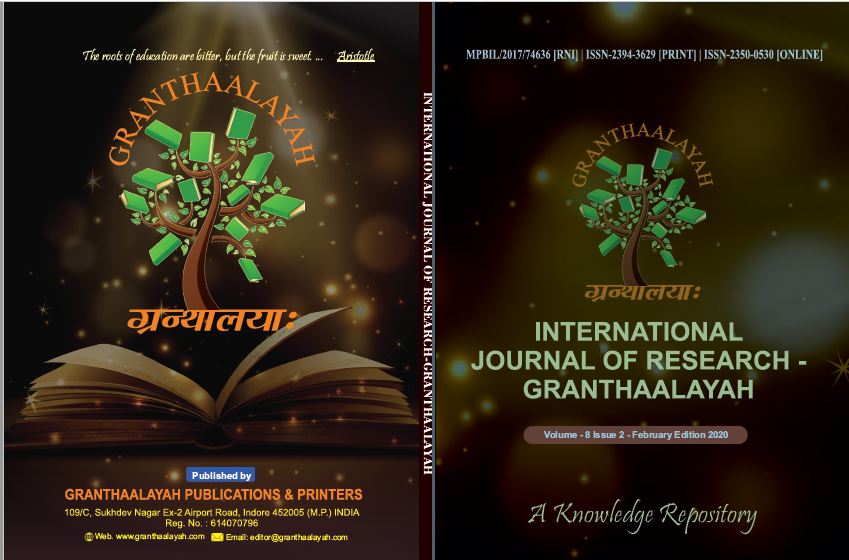BETWEEN FEAST AND FAMINE: THE QUIET WEIGHT OF A HANDFUL OF RICE
DOI:
https://doi.org/10.29121/granthaalayah.v8.i2.2020.6240Keywords:
Kamala Markandaya, A Handful of Rice, Urban Poverty, Postcolonial India, Hunger, Masculinity, Migration, Economic Survival, Feast and Famine, Quiet Despair, Alienation, Urban Marginalization, Family DynamicsAbstract [English]
This paper explores Kamala Markandaya's A Handful of Rice as a powerful literary meditation on poverty, survival, and social marginalization in post-independence India. Set against the backdrop of a rapidly urbanizing yet unequal society, the novel chronicles the life of Ravi, a rural migrant who leaves his village in search of opportunity, only to encounter the brutal realities of city life. The narrative revolves around the metaphor of “a handful of rice,” which symbolizes not only the bare minimum needed for physical survival but also the immense socio-economic burden borne by India’s urban poor. Kamala Markandaya portrays the tension between fleeting moments of sustenance—the “feast”—and the overwhelming, persistent specter of deprivation—the “famine.” Ravi’s journey is defined by cycles of temporary relief and chronic instability, capturing the precariousness that shapes the lives of millions. The novel also interrogates notions of masculinity, as Ravi’s struggle to fulfill his role as a provider exposes the emotional and psychological toll of economic failure. His descent into petty crime and moral compromise reflects the structural constraints faced by the disenfranchised. The paper further examines how Kamala Markandaya's quiet, restrained narrative style intensifies the emotional weight of the story, rendering Ravi’s suffering all the more poignant. Through sparse yet evocative prose, Kamala Markandaya amplifies the silent desperation of those pushed to the margins. Ultimately, A Handful of Rice stands as both a social document and a humanistic plea, drawing attention to the invisible labor, unmet dreams, and quiet endurance that define the lives of the urban underclass.
Downloads
References
Kamala Markandaya . A Handful of Rice. Orient Paperbacks, 1966.
Mishra, Binod. “Struggle for Survival in Kamala Markandaya Handful of Rice.” Indian Journal of Postcolonial Literatures, vol. 10, no. 2, 2010, pp. 55–64.
Nayar, Pramod K. Postcolonial Literature: An Introduction. Pearson Education India, 2008.
Sen, Amartya. Development as Freedom. Oxford University Press, 1999.
Mukherjee, Meenakshi. The Twice Born Fiction: Indian Novel in English. Heinemann, 1971.
Naik, M.K. A History of Indian English Literature. Sahitya Akademi, 1982.
Thieme, John. Post-Colonial Literatures in English: History, Language, Theory. Routledge, 2001.
Srivastava, Neelam. Postcolonialism and Religion: Negotiating Faith in Literature. Palgrave Macmillan, 2008.
Paranjape, Makarand. Towards a Poetics of the Indian English Novel. Shimla: Indian Institute of Advanced Study, 2000.
Downloads
Published
How to Cite
Issue
Section
License
Copyright (c) 2020 Paramjit Kaur

This work is licensed under a Creative Commons Attribution 4.0 International License.
With the licence CC-BY, authors retain the copyright, allowing anyone to download, reuse, re-print, modify, distribute, and/or copy their contribution. The work must be properly attributed to its author.
It is not necessary to ask for further permission from the author or journal board.
This journal provides immediate open access to its content on the principle that making research freely available to the public supports a greater global exchange of knowledge.






























